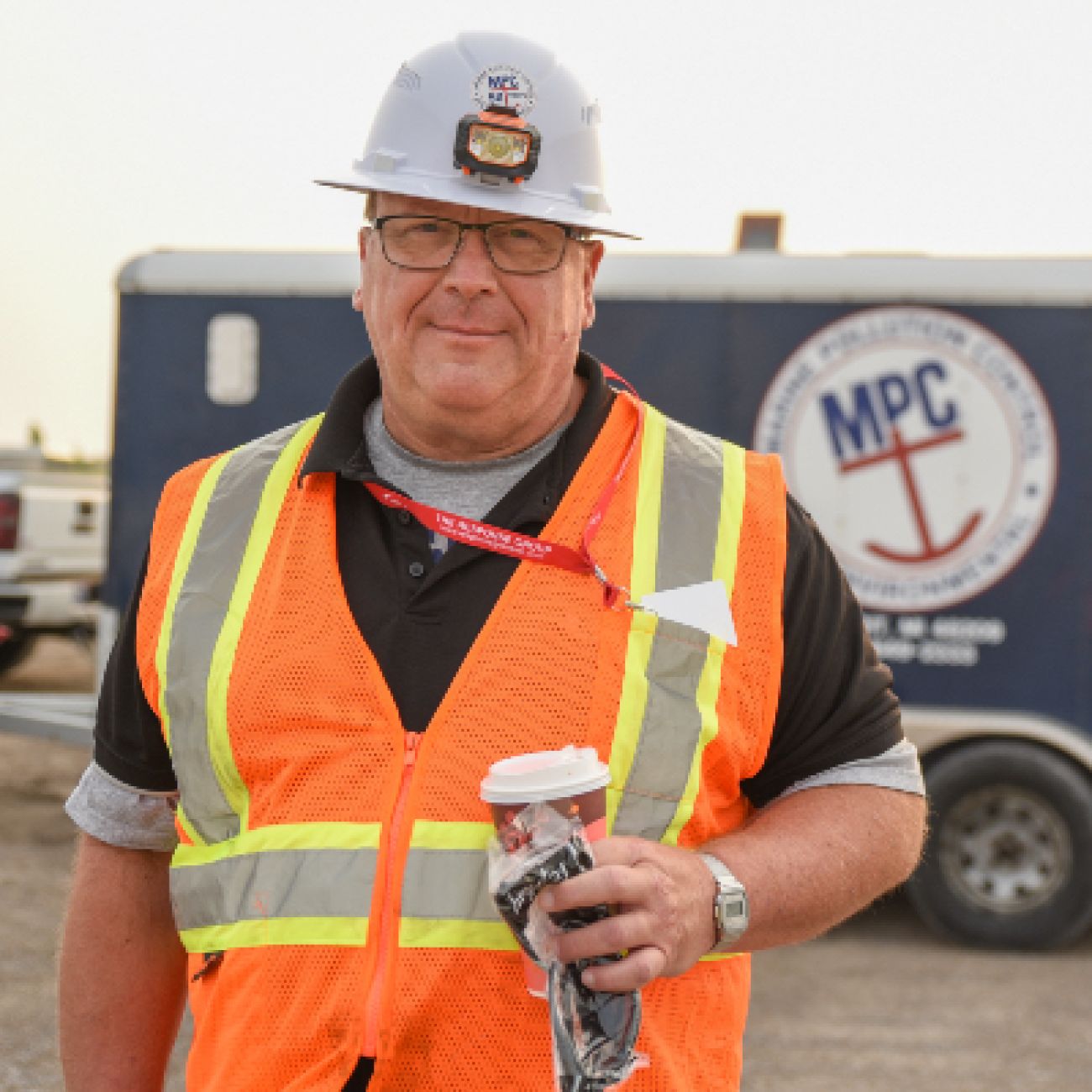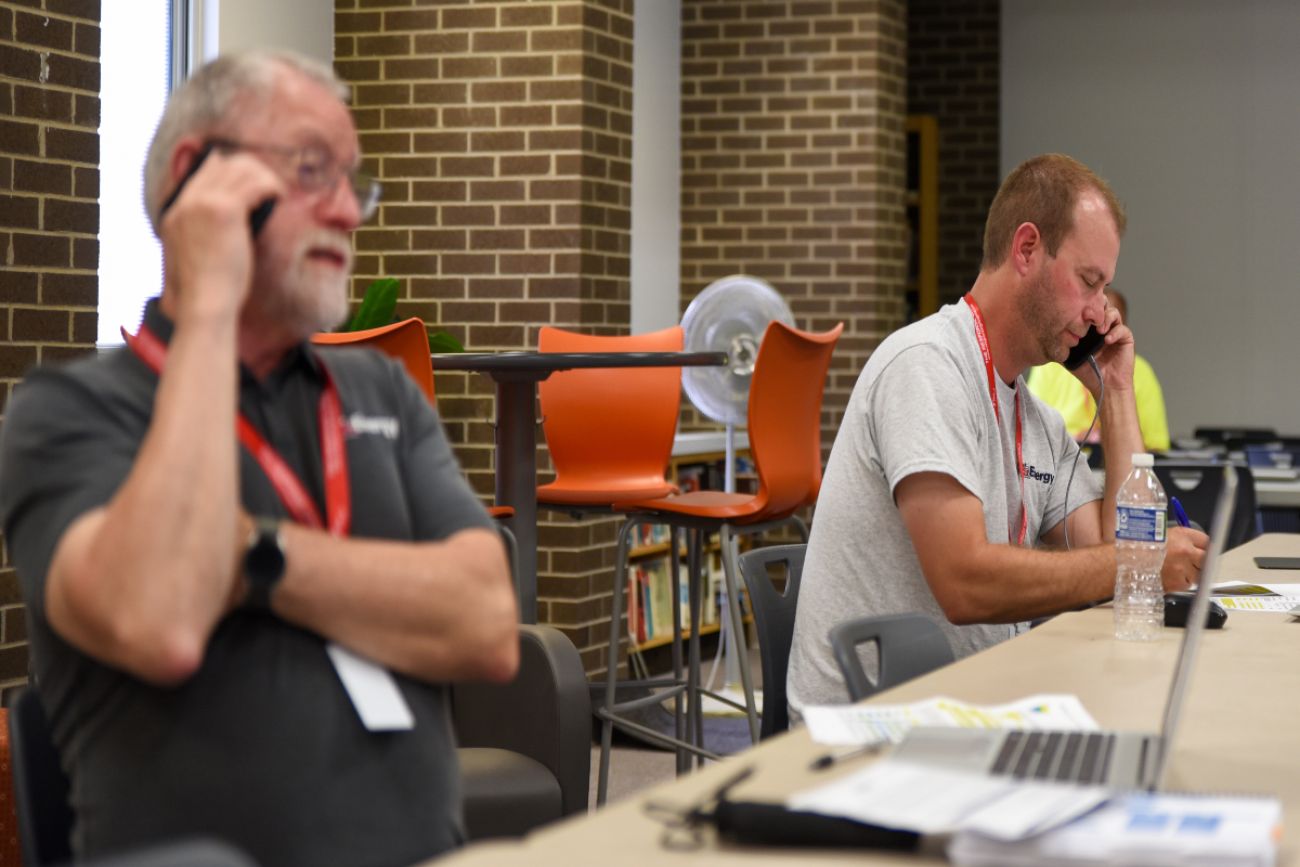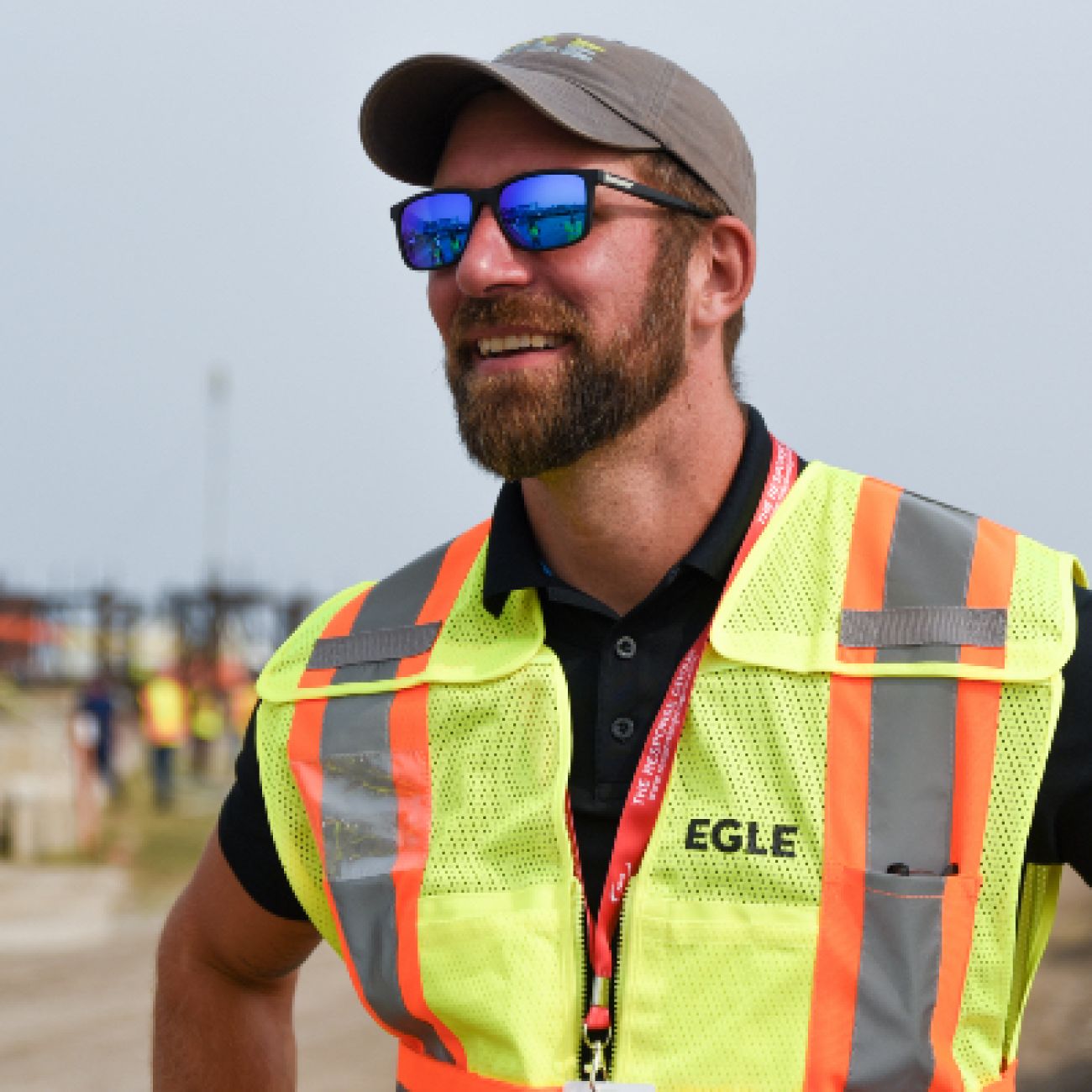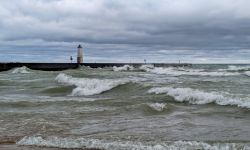Michigan crews prepare for a Great Lakes oil spill

- Ever since the Exxon Valdez spill in Alaska, companies that move or transport petroleum have been required to regularly practice for emergency spills.
- A recent spill test in Rogers City shows how crews prepare for the worst.
If someone mentioned something about an oil spill in the Great Lakes, a lot of people likely would think about the 70 year old Enbridge Energy oil pipeline sitting on the lake bed between Lakes Michigan and Huron. But, there are many potential places and sources that could result in petroleum spills around the lakes.
The year after the Exxon Valdez oil tanker ran aground in Prince William Sound in Alaska and spilled 11 million gallons of oil, Congress passed a law. The Oil Pollution Act of 1990 gave the U.S. Environmental Protection Agency more authority to prevent and to respond to oil spills.
Now, any company that moves or stores a lot of petroleum has to have an emergency plan. And it has to be tested regularly.
That’s why training exercises like one recently held in Rogers City are required.

“So we'll have federal, state, local and tribal entities come in as well as OSROs -those are the oil spill removal organizations- they come in and we work together in order to make sure that should something happen, we know how to respond to that and we test our plans,” said Brian Streichert, an emergency manager with the Coast Guard based in Sault Sainte Marie.
Related:
- Judge orders segment of Enbridge's Line 5 shut down and moved off Native American land
- Why Line 5 will likely remain open despite Democratic control of Lansing
He said the methods and technology are improving. A drone was on site. In some cases submersibles and autonomous vessels on the water can be used.
One of those oil spill removal organizations is MPC, Marine Pollution Control based in Detroit. MPC crews were getting ready for some simulated oil spill exercises in a Lake Huron harbor.

“We will be deploying some boom and recovery devices, simulating recovery to to a simulated spill here in Rogers City this morning,” said Bill Hazel, MPC Vice President for Marine Services.
Companies that handle large amounts of petroleum have to do drills every year, but on the third year, it has to assume a worst case scenario. That’s going to be different for each site.
“It depends upon the facility. It will be the largest tank or the amount of oil that a vessel can hold. It's a term that is used in the regulatory body to look at what would be the potential worst situation that a facility could look at,” Hazel explained.
He said the trick is not just to be prepared, but to use tactics in a manner that addresses, “the trajectory and fate of any type of release in the Great Lakes.”
In the Rogers City exercise this year, the scenario was a storage tank holding 76,000 barrels (3.192 million gallons) of ultra low sulphur diesel fuel is punctured by a crane.

“Which in this case is the total failure of a tank, which causes catastrophic consequences into the lake,” said Brian Meier, a senior consultant for the Response Group, which is facilitating the drill.
A spill of that magnitude would be devastating for a long stretch of Lake Huron.
Meier said if that level of release happened, the Coast Guard, the EPA, the oil spill removal organizations -none of them- would be on the scene immediately.
“All responses are local. So having a tank like this, having a potential like this in a small town, it's important to bring in local responders,” Meier said.
So after drill exercises on the water such as boats setting floating barriers to contain oil, a drone watching how dye (substituting for spilled fuel) moves in the water, all the drill exercises move to the local high school.
That’s where an incident command center is set up.

The company that owns the big fuel tank, the county emergency management agency, the city, and others are on their phones, directing their staffs through the emergency drill.
“One of the planning team members was the Presque Isle Emergency Management. There were here and they specifically said they wanted to test their emergency EOC (Emergency Operations Center). So, they wanted to test their plan and we were able to allow them the opportunity to do that in conjunctions with an exercise of this magnitude, which I think is great,” said Brian Meier with the Response Group.

The federal and state officials went through their incident command drills the following day. That’s because in an actual emergency, most of them would be on the road to Rogers City on the first day.
There was a fairly new player in the mix of agencies and organizations at the Rogers City oil spill drill. The U.S. Coast Guard Great Lakes National Center of Expertise is made up of Coast Guard personnel as well as academic researchers.
Lieutenant Commander Christopher ‘Kit’ Pace says there’s been a lot of research about oil spills in the ocean, but salt water and freshwater are different. They might require different tactics and/or different chemicals to deal with petroleum spills.
“And until we research these things, we won't know exactly maybe how best to respond.”
The Center of Expertise is located at Lake Superior State University in Sault Sainte Marie.
There’s one more actor in an oil spill scenario. That could be you. The person who first sees a spill needs to call it in.

Jay Eickholt is the Emergency Management Coordinator for the Michigan Department of Environment, Great Lakes, and. He said people should immediately call the state’s Pollution Emergency Alert System hotline at 800-292-4706. He says even if it’s a small spill in a marina, you should make the call.
“The sooner we know about it, the sooner we can get some eyes on it, or at least do some follow up to make sure that the impact isn't going to be greater beyond the immediate area that's soiled or spoiled from a release.”
EGLE can alert the correct local first responders and from there determine if it’s necessary to call in the government agencies and those oil spill response organizations. Eickholt said Michigan also has mutual aid agreements with other Great Lakes states and Canada, so even more help is available if needed.
While they’re preparing for the worst, everyone is hoping they never have to deal with another oil spill. The 2010 Enbridge pipeline oil spill near Marshall was stopped before it reached Lake Michigan, but it left a mess to clean up in the Kalamazoo River.
Michigan Environment Watch
Michigan Environment Watch examines how public policy, industry, and other factors interact with the state’s trove of natural resources.
- See full coverage
- Subscribe
- Share tips and questions with Bridge environment reporter Kelly House
Michigan Environment Watch is made possible by generous financial support from:
Our generous Environment Watch underwriters encourage Bridge Michigan readers to also support civic journalism by becoming Bridge members. Please consider joining today.
See what new members are saying about why they donated to Bridge Michigan:
- “In order for this information to be accurate and unbiased it must be underwritten by its readers, not by special interests.” - Larry S.
- “Not many other media sources report on the topics Bridge does.” - Susan B.
- “Your journalism is outstanding and rare these days.” - Mark S.
If you want to ensure the future of nonpartisan, nonprofit Michigan journalism, please become a member today. You, too, will be asked why you donated and maybe we'll feature your quote next time!






